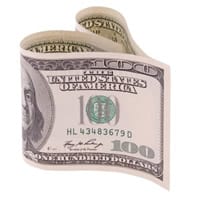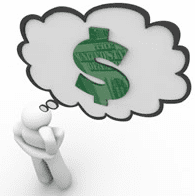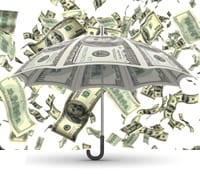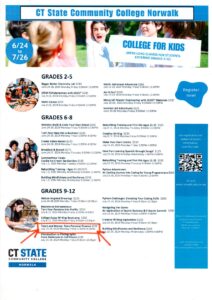 Have you cut the cord or do you want to with your TV provider or streaming service? When was the last time you used your local library? With your library card you can download the Hoopla app and stream movies at home for free. #JillRussoFoster #FinancialLiteracyMonth
Have you cut the cord or do you want to with your TV provider or streaming service? When was the last time you used your local library? With your library card you can download the Hoopla app and stream movies at home for free. #JillRussoFoster #FinancialLiteracyMonth
Financial Literacy Month #11
 Now that you are not paying fees on your bank account, are you earning interest on your money? There are some amazing accounts (both checking and savings) with great interest rates. Shop around for the best rate without fees. #JillRussoFoster #FinancialLiteracyMonth
Now that you are not paying fees on your bank account, are you earning interest on your money? There are some amazing accounts (both checking and savings) with great interest rates. Shop around for the best rate without fees. #JillRussoFoster #FinancialLiteracyMonth
Financial Literacy Month #10
 Are you paying fees to your bank? You should be able to bank without fees. Some banks waive the fees with a minimum balance or direct deposit. Paying a monthly fee to have a bank account is a waste of your hard-earned money. #JillRussoFoster #FinancialLiteracyMonth
Are you paying fees to your bank? You should be able to bank without fees. Some banks waive the fees with a minimum balance or direct deposit. Paying a monthly fee to have a bank account is a waste of your hard-earned money. #JillRussoFoster #FinancialLiteracyMonth
Financial Literacy Month #8
 While thinking about saving money, what can you eliminate from your life that would save you money? Can you bring your choice of beverage from home versus buying? Can you stop buying bottled beverages? Do you bring your lunch with you from home? We have eliminated the trash removal / recycle bill by taking it ourselves. We went from $75/month to $25/year. How can you save? #JillRussoFoster #FinancialLiteracyMonth
While thinking about saving money, what can you eliminate from your life that would save you money? Can you bring your choice of beverage from home versus buying? Can you stop buying bottled beverages? Do you bring your lunch with you from home? We have eliminated the trash removal / recycle bill by taking it ourselves. We went from $75/month to $25/year. How can you save? #JillRussoFoster #FinancialLiteracyMonth
Financial Literacy Month #7
 One way to save money is to repair items versus buying items again. If that’s not possible, maybe you can purchase the item at a discount or used. Buy Nothing is a really great group where people list what they want to get rid of and others offer to pick the item up for free. #JillRussoFoster #FinancialLiteracyMonth
One way to save money is to repair items versus buying items again. If that’s not possible, maybe you can purchase the item at a discount or used. Buy Nothing is a really great group where people list what they want to get rid of and others offer to pick the item up for free. #JillRussoFoster #FinancialLiteracyMonth
Financial Literacy Month #6
 Do you have an emergency fund? You never know what could happen in life. Experts say you should have 6 months to a year worth of income on hand for life’s what ifs. Yes, that can be overwhelming to go from minimal savings to this goal. Start by finding ways to save $5 a day to start. Automate your savings goals so that they happen. #JillRussoFoster #FinancialLiteracyMonth
Do you have an emergency fund? You never know what could happen in life. Experts say you should have 6 months to a year worth of income on hand for life’s what ifs. Yes, that can be overwhelming to go from minimal savings to this goal. Start by finding ways to save $5 a day to start. Automate your savings goals so that they happen. #JillRussoFoster #FinancialLiteracyMonth
Want Your Teens To Learn About Money and Finances?
Spots are filling up, so don’t let your teen miss out. Once again, I will be teaching at Norwalk Community College: Teens and Money: Teen Personal Finance. The class will cover budgeting, savings, credit, debt, taxes and more. Registration details are in the flyer. 
Teens and Money: Teen Personal Finance Class This Summer
It’s time to register your teens for summer classes at Norwalk Community College. Once again, I will be teaching, Teens and Money: Teen Personal Finance. The class will cover budgeting, savings, credit, debt, taxes and more. Click for more inf ormation or for registration details.
ormation or for registration details.
Are you curious about when to start social security?

That’s a question on a lot of people’s minds. Should I take it early at 62 or at my full retirement age or wait until I am 70.
Well wouldn’t it be great if you had a crystal ball to get the right answer for you. Well, we don’t and you want to make the right decision for your situation.
Here is an article from the Motley Fool that could give you some information that may help you make a decision that’s right for you.
Back-to-School Supplies: A Zero Waste Guide
 This is from Zero Waste Schools:
This is from Zero Waste Schools:
Fall is an exciting and busy time as parents, teachers, and students
prepare for a new school year. Back-to-school is a great time to
gather school items that promote environmental sustainability and
save you money each year. Working together to incorporate zero
waste can be simple and fun too. Start your school year off right with
these zero waste back-to-school tips!
Reusing Supplies
Home
Shop at home first and reuse or refurbish items from previous years. Identify which school supplies are
still in good condition for reuse. Avoid purchasing new versions of these items until your child has
gotten full use from the ones they already own.
● Some commonly reused school supplies may include binders, backpacks, notebooks, scissors,
pencil pouches, and rulers.
● Used items can be easily refurbished through simple steps such as tearing out used paper in
notebooks, taping over small tears in folders or binders, or sewing work on backpacks or
clothing.
● Blogs and websites like Pinterest have many DIY craft ideas for refurbishing and decorating old
school supplies.
Friends, family, neighbors
Ask friends, family, or neighbors if they have any extra or lightly used school supplies and clothing that
they do not need. This will help your child acquire their necessary supplies while helping other families
clear out clutter. Consider scheduling an annual clothing or supplies swap where families bring items
that they do not plan on reusing. Finish the event by donating any unswapped items.
Thrift stores
Thrift stores can be a great source for new clothes, often selling name brands at a fraction of retail
prices. Many thrift stores also have an office supply section where lightly used school supplies can be
found. If in the Chicagoland area, visit The Waste Shed or the Creative Reuse Warehouse to shop for
used school supplies.
Buying New Supplies
Reduce non-recyclables
Less plastic: When you must purchase new products,
choose products that are durable and can be recycled once
they have been worn down, such as:
● Metal or wooden rulers
● Metal pencil sharpeners
● Metal safety scissors
● More durable folders
● Binders made with paper- or plant-based materials
● Spiral notebooks without plastic covers or folders
Bulk products: Purchase items in bulk to reduce the amount of packaging required for each item.
Buying in bulk is not only more environmentally sustainable, it can also save money.
Use durable, long-lasting products
Purchase durable products that you expect to last
several years, and handle these items with care.
Items that could be reused over multiple years
include backpacks, pencil pouches, rulers, pencil
sharpeners, scissors, paper clips, mechanical pencils,
locker accessories, and calculators. When initially
purchasing these products, consider buying classic
or simple designs that children are less likely to
outgrow.
Support eco-friendly production
Look for items that are produced in a sustainable way such as school supplies that are:
● Sourced from recycled material (look for the highest percentage of post-consumer recycled
content)
● Made with non-toxic and non-hazardous material such as PVC-free products
● Packaged in material that is recyclable or reusable
● Labeled with sustainability seals or certifications such as the Forest Stewardship Council seal
on paper and pencils
Most standard retailers will highlight their eco-friendly products on the product tag or their website.
Another option might be to purchase a pre-bundled sustainable school supply kits, which are offered
by some online retailers such as Green ABCs, Wisdom Supply, or Guided.
ZERO WASTE LUNCH SUPPLIES
Save money and make less garbage by packing a zero waste lunch from home. Instead of buying
disposable products that get used only once, pack a zero waste lunch with washable food and drink
containers, utensils, and cloth napkins. Buying food in bulk and portioning it into your own containers
also typically costs less than buying food in single-serve packaging. Visit www.wastefreelunches.org
to learn more.
WAYS FOR TEACHERS TO PROMOTE MORE SUSTAINABLE SUPPLIES
If you are a teacher, it can be easy and less expensive to promote
sustainability through your school supplies decisions.
Supplies list: Discuss with co-workers and administrators the idea
of creating a school supplies list that promotes reuse, durability, and
sustainability. A sustainable list might include items that are easy to
reuse or recycle, as well as a note on sustainability.
● Consider alternatives to plastic bags, such as paper envelopes.
● Consider paring down the school supply list and asking families to contribute money to a
classroom supplies fund. This fund can be used by the teacher to cover the cost of additional
supplies that the class may need on an as needed basis. This may also allow the teacher to
purchase some supplies, such as wipes and hand sanitizer, in larger sizes or in bulk, which cuts
down on packaging waste and may also be more cost effective.
● Recommend eco-friendly soaps and cleaners if parents are required to purchase those.
Classroom supplies: When gathering supplies for your own classroom, keep in mind the places you
might find used or recyclable supplies. Consider visiting organizations such as SCARCE, which allows
teachers and administrators to access donated school supplies. If in the Chicagoland area, visit The
Waste Shed or the Creative Reuse Warehouse to shop for used school supplies.
Make supplies communal to eliminate the need for labeling items. This also makes it easier to use
supplies from one year to the next. At the end of the school year, collect supplies, such as scissors and
rulers, to use again the following year. Be sure to remove these items from your supply list. The
classroom supplies fund mentioned above can be used to replace any items that may have gotten lost
during the school year.
For more information and to share your success stories, contact us at: ZeroWaste@SevenGenerationsAhead.org
- « Previous Page
- 1
- 2
- 3
- 4
- …
- 35
- Next Page »